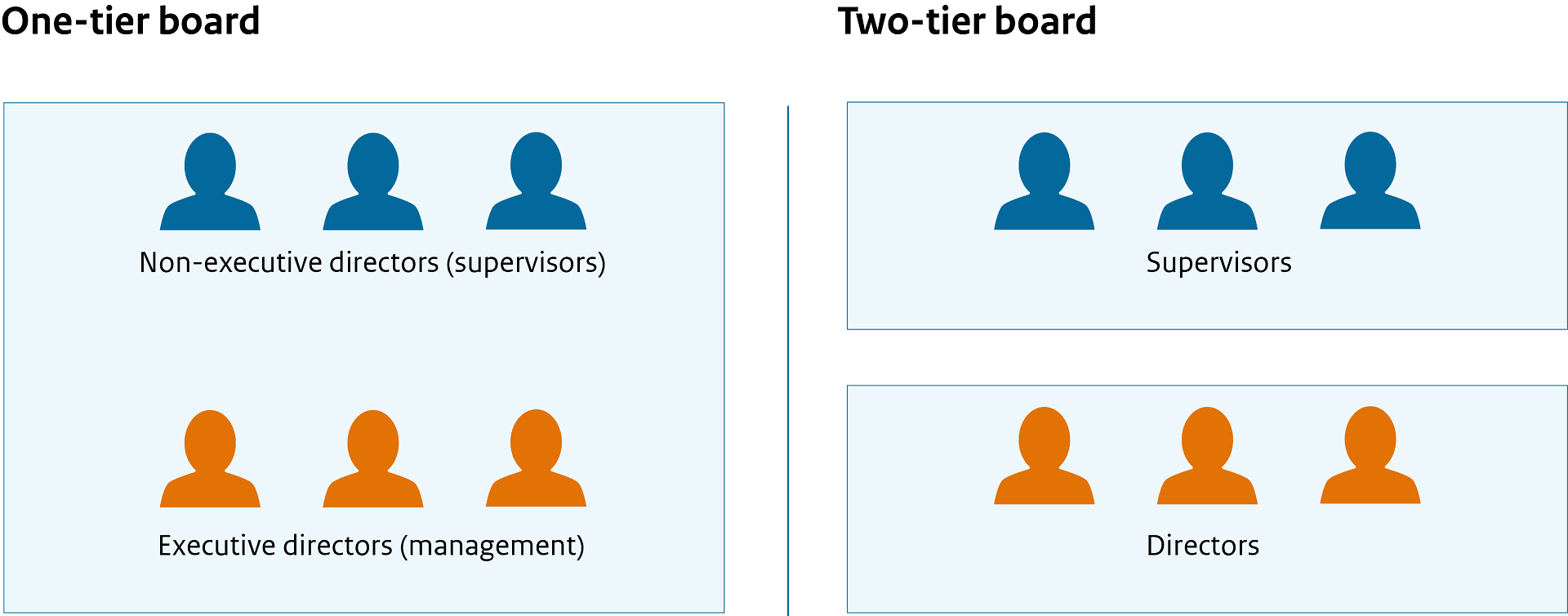One-tier or two-tier board as a governance model

Do you have a private (bv) or public (nv) limited company, or do you want to start one? Then you may appoint supervisors. They can be part of the management board. In that case, you have a unitary (or one-tier) board. They can also form an independent supervisory board. Then your company has a two-tier board. On this page, you can read everything you need to know about one-tier and two-tier boards as governance models.
What is a two-tier board?
In the two-tier system (dualistic governance model), there is a separation between management and supervisors. The board is responsible for the day-to-day management of the company. A separate supervisory board supervises the management. Most private limited and public limited companies in the Netherlands (bv and nv) have a two-tier board.
 In a one-tier board, the directors and supervisors form one board. In a two-tier board, there is a separation between the directors and supervisors.
In a one-tier board, the directors and supervisors form one board. In a two-tier board, there is a separation between the directors and supervisors.
What is a one-tier board?
If you have a one-tier or unitary board (monistic governance model), there is only one board that consists of both the management and the supervisors. The supervisors are part of the board. Within the one-tier board a distinction is made between executive directors and non-executive directors. Only a non-executive director may fulfil the task of chairperson of the board. You can include a one-tier board in the articles of association.
Why choose a one-tier board
- The advantage of a one-tier board may be that board members receive information earlier and more detailed than supervisory board members within a two-tier board.
- The (direct) involvement of non-executive directors is also greater in a one-tier board. They are also responsible for the actions and decisions of executive directors in the day-to-day business.
- Directors are close to the organisational policy. They can intervene directly in the course and strategy of the company.
- Non-executive directors are always natural persons. Executive directors can be natural or legal persons.
What do you need to arrange?
You record your choice for a governance model in the articles of association. A civil-law notary will do this for you. When you start a new private (bv) or public (nv) limited company, they will include your choice for a one-tier or two-tier board in your articles of association. The notary can amend the articles of association for an existing bv or nv.
What are the disadvantages of a one-tier board?
To the outside world, it appears as though there is no clear distinction between management and supervision with a one-tier board. In practice, this may lead to an interweaving of management and supervision, because the supervisory board is not outside the management board. If a director or supervisory director has a personal interest that conflicts with the interest of the company, they cannot participate in the decision-making.
The one-tier board in the Business Register extract
The term 'one-tier board' does not appear in the KVK's Business Register. You can see that a bv or nv has this governance model by checking the registered directors, who are classified as either being 'executive' (uitvoerend) or 'non-executive' (niet-uitvoerend). If a company has a two-tier board, this distinction is not made.
Representation at a one-tier board
The main rule is that the management board is jointly authorised to represent the company. Each director is also authorised to represent the company individually, including the non-executive directors. This individual power can be limited in the articles of association.